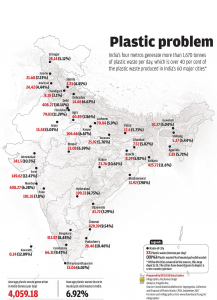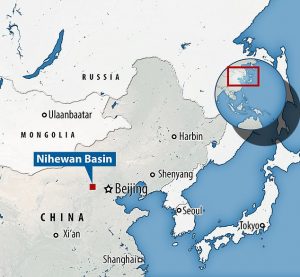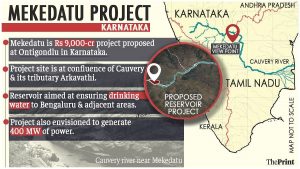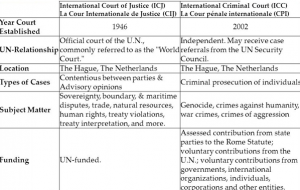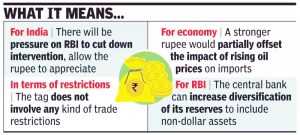DAILY CURRENT AFFAIRS (MARCH 05, 2022)
THE ENVIRONMENT AND ECOLOGY
1.NEW GIN BERRY SPICIES DISCOVERED IN TN
THE CONTEXT: A team of scientists from the Botanical Survey of India (BSI) has discovered a new gin berry species from the Kanyakumari Wildlife Sanctuary in Tamil Nadu.
THE EXPLANATION:
- The species, named Glycosmis albicarpa with a distinct large white fruit, is endemic to the southern Western Ghats. The species belongs to the Orange family, Rutaceae.
- Berries of Glycosmis species have the unique characteristic of ‘gin aroma’ and has gained in popularity as an edible fruit. The species is also a larval host plant for butterflies like other species of Glycosmis.
- The species, an evergreen small tree, was found as undergrowth in Tirunelveli semi-evergreen forests at the Panagudi forest section of the wildlife sanctuary as a single population that covers an area of approximately 2 sq.km.
- Many of the related plants of these taxonomic groups are being utilised for their medicinal values and food. Most commonly related species of these plants are collected from the wild, mainly for local use as food and medicine.
- According to experts, the discovery not only re-emphasises the uniqueness and endemism in Western Ghats’ flora but also add to the growing inventory of the region’s flora.
About Botanical Survey of India (BSI)
- Botanical Survey of India (BSI) was founded in the pre-independence era by the East India Company (EIC) in 1890. It is located in Kolkata, West Bengal. Its parent organization is the Ministry of Environment, Forest, and Climate Change.
- It undertakes survey, research, and conservation of plant wealth of India. It collects and maintains gene banks of endangered and vulnerable plant species.
- India is endowed with rich biodiversity, which is now at threat from anthropogenic pressures. Urgent conservation measures are needed to prevent the loss of unique biodiversity.
THE INTERNATIONAL RELATIONS
2. RUSSIA SEIZES EUROPE’S LARGEST NUCLEAR PLANT: ZAPORIZHZHIA
THE CONTEXT: According to the Ukrainian authorities, the Russian forces have captured Ukraine’s Zaporizhzhia nuclear power plant, the largest in Europe.
THE EXPLANATION:
Russia had already captured the defunct Chernobyl plant north of Kyiv, which spewed radioactive waste over much of Europe when it melted down in 1986.
Where is it located?
The Zaporizhzhia nuclear power plant is located in the southern Ukraine steppe on the Dnieper River, some 550 kilometres (342 miles) southeast of Ukraine’s capital, Kyiv, and about 525km (325 miles) south of Chernobyl, the site of the world’s worst nuclear power plant accident in 1986, which has also now been seized by Russian forces.

THE ECONOMIC DEVELOPMENTS
3. UNION GOVT RETHINKS GOLD MONETISATION SCHEME
THE CONTEXT: The Union government is reconsidering its Gold Monetization Scheme (GMS) as it believes its costs outweigh benefits, and the scheme could not achieve what it set out to do, it is learnt.
THE EXPLANATION:
- RBI has been asked to conduct a structural review of the scheme, including its rationale, associated high costs, and desirability of its continuation.
- The idea behind introducing the scheme, among others, was to wean away investors from buying physical gold, and invest in paper gold, as high gold imports put pressure on the current account deficit, the gap between export and import of goods and services.
- India’s current account deficit in April-September of financial year 2021-22 stood at 0.2 per cent of GDP, as against a surplus of 3 per cent in the year-ago period on the back of a sharp increase in the trade deficit.
About the Sovereign Gold Bond Scheme:
- The sovereign gold bond was introduced by the Government in 2015.
- The government introduced these bonds to help reduce India’s over-dependence on gold imports.
- The move was also aimed at changing the habits of Indians from saving in the physical form of gold to a paper form with Sovereign backing.
- Joint Holder: In the case of joint holding, the investment limit of 4 kg will be applied to the first applicant only.
- Collateral: Bonds can be used as collateral for loans. The loan-to-value (LTV) ratio is to be set equal to the ordinary gold loan mandated by the Reserve Bank from time to time.
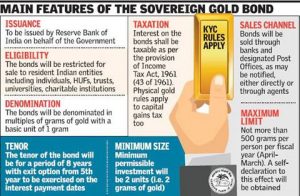
Merits of investing in gold bonds:
- For investors, it is advisable to invest in gold for portfolio diversification.
- Sovereign gold bonds are considered one of the better ways of investing in gold as along with capital appreciation, an investor gets a fixed rate of interest.
- Apart from this, it is tax-efficient as no capital gains are charged in case of redemption on maturity.
- Sovereign gold bonds are a good way to ensure an investment that does not need physical storage of the gold.
Demerits of sovereign gold bonds
- This is a long term investment, unlike physical gold which can be sold immediately.
- Sovereign gold bonds are listed on an exchange but the trading volumes are not high, therefore it will be difficult to exit before maturity.
THE PRELIMS PERSPECTIVE
4. POLAVARAM PROJECT
THE CONTEXT: Andhra Pradesh Chief Minister announced that ₹5 lakh financial package would be given to the farmers who parted with their lands for the Polavaram irrigation project prior to the enactment of the Right to Fair Compensation and Transparency in Land Acquisition, Rehabilitation and Resettlement Act, 2013.
THE EXPLANATION:
The Chief Minister observed that the Polavaram irrigation project would be a lifeline for the entire State of Andhra Pradesh. “The Godavari and Krishna regions would flourish further once the project is commissioned”.
About the Project:
- Polavaram is a multi-purpose irrigation project which is under construction and located on river Godavari near Ramayyapet village of Polavaram Mandal of West Godavari district in Andhra Pradesh. The project has been on cards for almost 75 years. This project is a dream for the 5-crore people of Andhra Pradesh. The project will be a one-stop solution for all the water needs of the state.
- The project reservoir has live storage 75.2 TMCs at canal’s full supply level of 41.15 metres (135 ft) MSL and gross storage of 194 TMCs thereby enabling irrigation of 23,20,000 acres (including stabilisation of existing irrigated lands).
- Polavaram will benefit all the 13 districts of A.P, directly and indirectly.
- Polavaram project dam being built on River Godavari can help divert and utilise Godavari water to Krishna and other rivers. If executed well, this project can make the state drought-free forever.
Features of Right to Fair Compensation and Transparency in Land Acquisition, Rehabilitation and Resettlement Act, 2013.
- First time provision of Social Impact Assessment Study for proposed projects prior to Preliminary Notification.
- Recognize non owners as Affected Families like Share Croppers, Tenants and Agricultural Labourers
- A mode of Acquisition requiring consent of displaced persons ( for private companies 80% and for PPP projects 70%)
- Statutory rehabilitation and resettlement entitlements for the project affected families
- Restricted the grounds on which land may be acquired under the urgency clause
- Recognition of principle of Social cost minimisation
- Special Provision for food security U/S 10 of the Act.
- Return of land to Land Bank/Original Owners as per section 101 of the Act.
THE MISCELLANEOUS
5. THE PRACTICE OF “NOKKUKOOLI”-GAWKING FEE
THE CONTEXT: Various trade unions in Kerala, said that they would take steps to end the anarchic trends in the industry, including ‘Nokkkooli’ and surprise strikes. The organisation also said they would stand by government measures to end practices that hinder industrial growth and increase the productivity of workers.
THE EXPLANATION:
What is Nokkukooli?
- Nokkukooli is a type of wage meant for workers overseeing the work of fellow workers.
- This practice has been widespread among the head-load workers who are basically labourers involved in loading and unloading activities.
- A Registered head-load worker demands Nokkukooli for either doing the loading or unloading work himself or when he gets the job done though his own worker.
- Various laws were also enacted to ensure the rights of working to carry loads for loading and unloading were protected.
What was the reason behind Kerala’s recent decision?
- Nokkukooli became a notorious practice of demanding wages for just simply seeing the work as it was easy to appoint a worker to do the job.
- Head-load workers also started exhorting huge sums from construction sites where machines move heavy objects, on the grounds of denying their right to work.
- In recent years, the growth of infrastructure and other reality projects has allowed head-load workers to earn huge amounts as Nokkukooli.
- But all this is due to decline in the actual work for head-load workers as markets and packaging methods have changed.
THE PRELIMS PRACTICE QUESTIONS
QUESTION OF THE DAY 5TH MARCH 2022
Q Consider the following statements about UNHRC:
- It is made up of 47 United Nations Member States elected by the UN General Assembly.
- Each elected member serves for a term of two years.
- Countries are disallowed from occupying a seat for more than two consecutive terms.
Which of the statements given above is/are correct?
a)1 only
b) 1 and 3
c) 2 and 3
d) 1, 2 and 3
ANSWER FOR 4TH MARCH 2022
ANSWER: C)
Explanation:
- Statement 1 is correct: It is a popular ritual form of dance worship in Kerala (North Malabar).
- Statement 2 is incorrect: Theyyam is performed by males, except the Devakoothutheyyam; the Devakoothu is the only Theyyam ritual performed by women.
- Statement 3 is correct: The dance or invocation is generally performed in front of the village shrine. There is no stage or curtain or other such arrangements for the performance.
